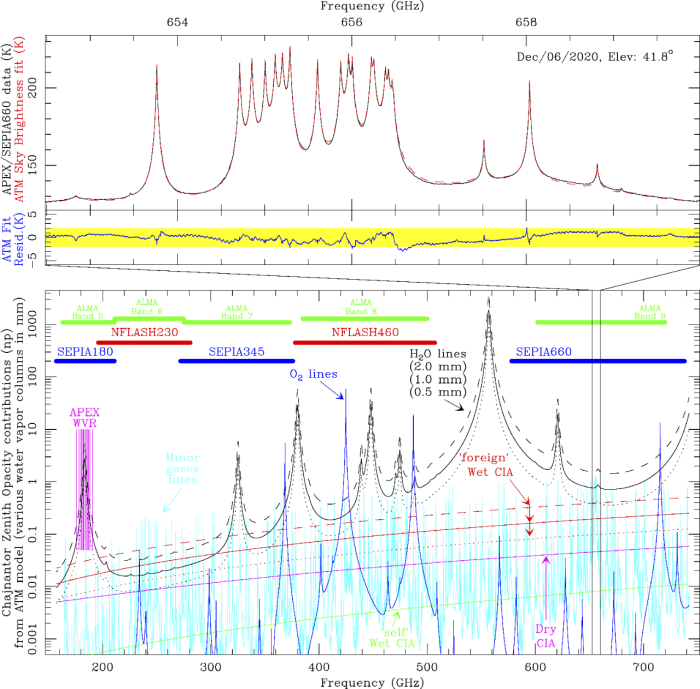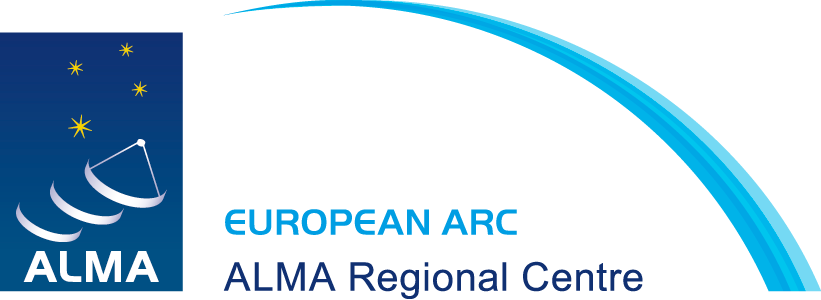A development study aimed to validate and improve the current atmospheric radiative transfer model implemented for ALMA (atmospheric transmission model, ATM) has been successfully completed. The model is important for both planning and helping in the calibration of ground-based observations at millimeter and submillimeter wavelengths.
Completion of the ALMA development study on the Atmospheric Model

Overview of the different components included in the ATM model with a zoom-in on the O3 complex on top
The study has used atmospheric spectra acquired as part of a calibration programme on Atacama Pathfinder EXperiment (APEX) under different weather conditions (~0.35-3.5 mm in precipitable water vapor columns), in different diurnal moments and seasons, and has resulted in a data set of more than 50 spectra within the 157.3-742.1 frequency range, at kHz resolution, an improvement of three orders of magnitude compared to previous similar studies.
The contributors to the millimetre and submillimetre atmospheric spectra are O2 through magnetic dipolar (M1) rotational transitions, H2O through electric dipolar (E1) rotational transitions, weaker E1 features from other "minor'' atmospheric gases, such as O3, N2O, CO, HCN, HCl, isotopologues and vibrationally excited states of some of these molecules, and, finally, non-resonant collision-induced absorption (CIA) due to several mechanisms: N2-N2, O2-O2 and O2-N2 collisions (dry CIA), and H2O-N2 + H2O-O2 collisions (“foreign” wet CIA), as well as H2O-H2O collisions (“self” wet CIA).
The study has achieved the following:
- Identified and implemented missing lines from already included molecules
- Included and implemented missing molecules in the previous ATM2018 model, with lines visible in the data
- Checked the accuracy of the intrinsic line shapes
- Checked the assumptions made to generate vertical profiles of P/T/H2O, and their layering in the model, and implemented some updates for a better data fit
- Updated the vertical profiles of minor atmospheric gases to minimize residuals on the observed lines. We have introduced, as necessary for O3, seasonal and diurnal dependent profiles, and new profiles year-round for other molecules. Those profiles have been used in ATM2024 model calculations in this work.
- Checked for the correctness of all isotopic ratios and vibrational energies so that the smallest features observed are well reproduced.
- Conducted an in-depth study of the collision induced absorption (CIA) due to its important in a broadband basis.
As a result, a new version of the ATM model for TelCal is now ready to be implemented. Further details can be found in the final study report.

